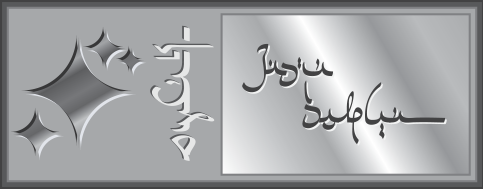Anthologica Universe Atlas / Forums / Department of Creativity / Money Thread / <!>Money Thread (2019-03-19 19:33:49)
quoting Rhetorica, Kelatetía: Dis, Major Belt 1:Try something like Public Domain Vectors or OpenClipart, especially the woodcuts section thereof. I'd be surprised (impressed, but still surprised) if Bloodbath's work is completely from scratch, particularly all the photographed bits.
I do use some line art drawings from Wikimedia Commons, mostly for the flowers (since getting good floral images is difficult), and the photographs of locations are either 90% or 100% taken by yours truly, but I do process the images myself, and all of the Moiré patterns and underprints I also do myself (except for the Guilloche patterns, which I make using an online tool. But processing the images isn't too bad: you make them generally monochrome, then you eliminate the white areas. The result can then be colored as desired.
quoting Rhetorica, Kelatetía: Dis, Major Belt 1:
Here's an example of early Lilitic currency (with yet another new script!), a 58 mm × 23 mm × 8.3 mm metal bar (similar to a slip of gold-pressed Latinum, really.) As I've mentioned in the distant, foggy past, the Lilitai back their money directly with labour, and issue a single denomination, typically worth a day's work. These are called viglai (sg. vigla, literally "promise") and are issued by the individual who will carry out the work. The bars are cast in an alloy of lead, antimony, and tin at a central mint. The designs are made using a personal coin mold, and include the issuer's name; the molds also generally function as a sort of signet ring, or even an ink stamp, that can be worn as a pendant.
The vigla market is almost uniquely variable, and in many ways resembles a bond market. The viglai of the famous are highly prized, but so too are the viglai of the highly industrious and reliable; failing to honour an agreement paid for with vigla has obvious and serious consequences for the issuer's social credit rating. However, as viglai can always be bought back and taken out of circulation, there is also an obvious imperative to minimize risk by only issuing money in one's name when necessary—otherwise, one's rivals or enemies may end up with the power to make uncomfortable (but not unreasonable) requests.
Much has been made of defining what can fairly be asked of the issuer when redeeming a vigla, and there many laws, taboos, and etiquette pertaining to the subject. On more than one occasion, an individual's credit rating has emerged unscathed after refusing work because it was sought in bad faith, or by a pariah.
Very cool idea, and very nice design. The system's almost a bit like how banknotes somewhat traditionally worked, with trust being the main backing of the instrument. Seems a small bit impractical to issue it in day units, though...
quoting Hālian, Atetía @ Central Florida:Your money is too beautiful for this world, how do you not have a job designing money irl
(Also I've been trying to design Hoennese coinage but drawing a blank as to obverse designs… doesn't help that I can't draw anything more complicated than simple geometric shapes myself, either vector or raster.)
Haven't had an opportunity, plus I like other things equally. (Like Science.)
As for coin designs, like Rhetorica said, art isn't necessary. Also, use inspiration from real life! There are loads of currencies out there, each of which (often) uses a different design for the coinage. That's actually one of the ways I got good at banknote design: I look at lots of banknotes issued throughout the world and use those as bases on which I design mine. For example, Ilian coins are somewhat based off the old Belgian Franc coins mixed with the pre-2008 Sterling coins. Similarly, Ilian banknotes are I think largely from Serbian dinar, Bulgarian lev, and the old Belgian franc notes.

